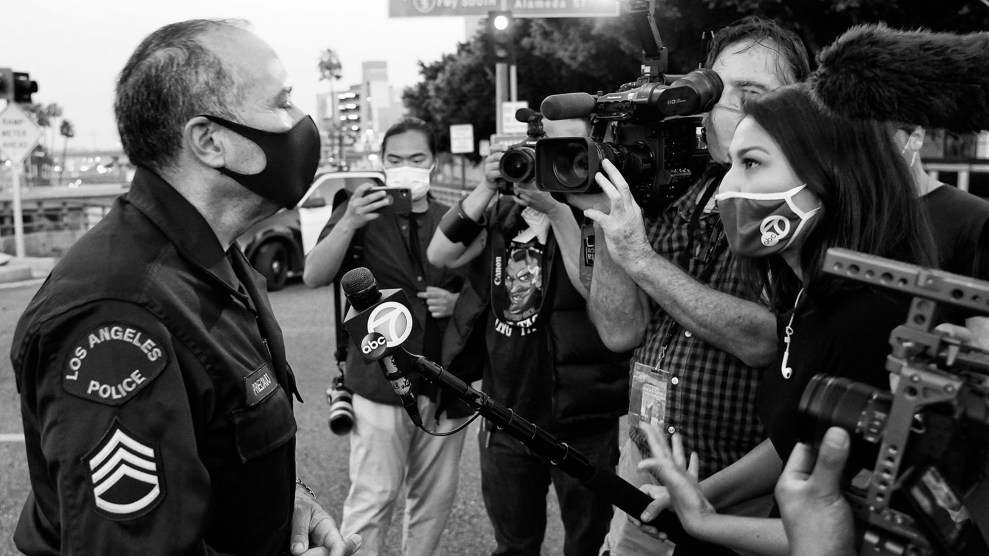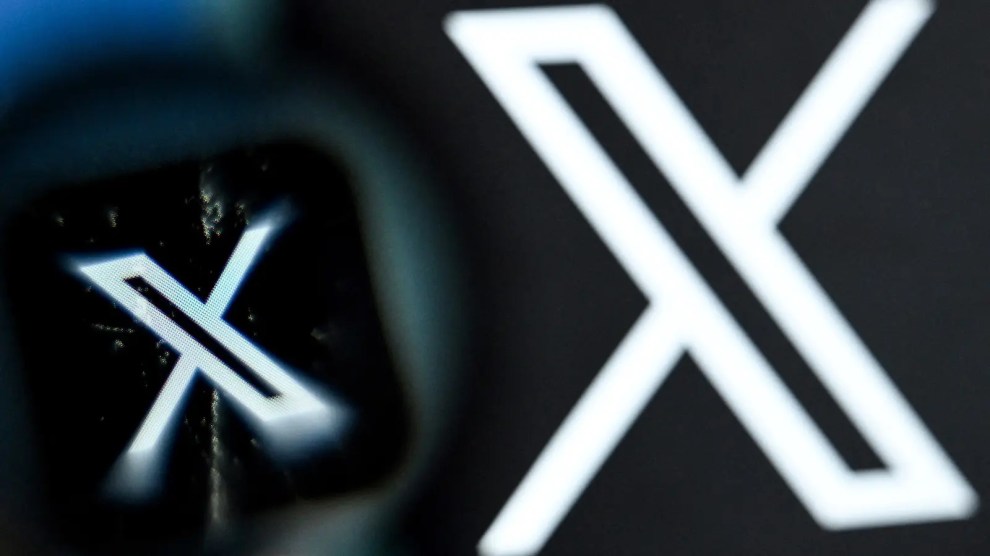
Mother Jones; Unsplash
Three years ago today, George Floyd was murdered, and his death, alongside the killings of Ahmaud Arbery and Breonna Taylor, acted as a catalyst for many news organizations to address their lack of diversity. In 2020, media institutions created diversity and inclusion positions, hired more people of color, and launched programs aimed at reducing racial bias. If outlets changed who worked in newsrooms, the thinking went, changes to what stories were told and by whom would follow.
I have the honor of being the Vice President of People and Culture at Mother Jones. A huge part of my job includes initiatives to strengthen our practices around Diversity, Equity, Inclusion, and Belonging (DEIB). Since I joined the organization in January 2022, it has been a wonderful experience to collaborate with our team on creating a culture of inclusion. We have completed a lot of good work, but there is more to be done. In this effort, I have the support of not only our organization’s board and senior leadership, but also the broader staff.
But this is not the case at every news organization. Looking back at the last three years, much has changed. Much has not. According to my friend and colleague Adrienne Johnson, a 20-year human resources professional and an African American woman, “Diversity is only as important as the most recent unrest.”
Indeed, the protests that followed Floyd’s murder three years ago today not only pushed legacy newsrooms to change, but set off a broader stampede to hire DEIB practitioners. In 2021, consulting firm Russell Reynolds Associates released a study showing that the hiring of new chief diversity officers (CDOs) within S&P 500 companies had nearly tripled over the last 16 months.
But amid 2023’s layoffs, I can tell you that, based on my personal connections and professional networks, the first employees many news companies are shedding are the ones leading DEIB work. This mirrors broader trends. A recent study by DDI, a leadership consulting firm, found that companies were shedding DEIB programs, and were 25 percent less likely to report having one than a few years before. Their numbers suggest that one in four companies are not offering DEIB programs. As Elie Mystal recently put it while writing for the Nation, DEIB “officers, hired en masse after the protests following Floyd’s murder, are now being quietly phased out of their positions.” Citing numbers from Revelio Labs, a workplace data broker, Mystal reported that in late 2022, the attrition rate for DEIB officers was 33 percent, compared with 21 percent for people in other roles. As an HR professional who works in the field, I find this particularly alarming.
It stands to reason that many departures are linked to the lack of support given to DEIB leaders who come from marginalized communities. Departing CDOs have described a lack of leadership commitment, lack of resources and support, lack of honesty, not being listened to, and gaslighting. According to Shaun Harper, a professor at the University of Southern California’s Marshall School of Business, there is a wide range of ways companies fall short when it comes to chief diversity officers, including by failing to align their work with business strategy, or to consider it high stakes, or to make serious efforts to retain them as employees. When the pendulum swings back—pushed, I expect, by another round of unrest—and a new generation of CDOs are hired, I can only hope we will have learned from this experience.
What does it mean when news organizations shed their DEIB practitioners and programs?
For one, it tells the staff that the work was performative, especially if there were no programs established, staff hired, or money spent to integrate DEIB into the organization’s DNA.
Secondly, by making a big deal about supporting DEIB work and then getting rid of the people leading it through layoffs or having them leave after by providing, at best, inadequate support, news companies are deepening the ravine of distrust, disloyalty, and disengagement between managers and workers—a gulf where “quiet quitting” or “soft quitting” can flourish.
Thirdly, it signals that news companies have given up on attracting and retaining a large segment of younger and more diverse generations—not only as workers, but as members of their audience. I have sat in on phone interviews with Millennials and Gen Z candidates and have been questioned on our DEIB strategy. With talent winning the war on talent, these are demographics you don’t want to write off.
Finally, if news organizations’ lack of diversity puts off these very different demographics, it is also putting off those organizations’ odds of sustaining their operations into the future. This country is rapidly changing and news organizations need to change as well. In that context, DEIB is not a nice to have—but a must.
While I wouldn’t necessarily recommend it, there are things that news outlets and other organizations can do to continue DEIB work with no staff, no money, and little support. The best approach is to build systems that help weave DEIB into the life cycle of employees. Some ideas:
Company Values: Organizations should include diversity and variations on the theme in mission statements.
Job Descriptions: Every job description, from entry-level employee to the CEO, should have at least one item where they have a responsibility to assist in creating an inclusive work environment.
Job Postings: Get rid of language that discriminates or erects roadblocks to marginalized groups considering applying. One way is to be very specific about required and preferred skills. Men often put their hat in the ring when they have 70 percent of the required skills. Women and Black, Indigenous, and People of Color candidates usually only apply with 100 percent.
Candidate Sourcing: This is not just about recruiting new employees on ethnic media job boards. It means going to ethnic media conventions and events. It means actively recruiting passive BIPOC candidates. It may be uncomfortable at first, but everyone gets better with practice.
Job Interviews: Ask diversity questions at every juncture of the process. Not only does this give the organization’s interviewers a chance to see if a candidate’s values align, but it underlines that the issue is important. And having non-BIPOC employees ask such questions reinforces that importance to current employees while strengthening their own commitment to diversity.
Rubrics: Rubrics are a way to rate job candidates (somewhat) objectively by judging their qualifications and interview answers against a list of requirements, and are a tool used to eliminate selecting so-called “mini mes”—people the hirer feels more comfortable with. Rubrics can include diversity or experience in dealing with diversity as one criterion.
Trainings: Every organization provides training to their staff. If not, they should. Some options within reach include the program commonly known as “Crucial Conversations,” alongside training on emotional intelligence and respect in the workplace. These opportunities can reinforce company values and show how DEIB can be integrated into everything the organization does.
Performance Goals: DEIB work often falls on the shoulders of BIPOC employees, which can be tiring and spark resentment. They did not cause the problem but are expected to clean it up, and are seldom rewarded for this extra work. By setting diversity performance goals for everyone in the organization, much of the work can be taken off the shoulders of BIPOC employees.
Stay and Exit Interviews: At Mother Jones, we conduct 30-, 60-, and 90-day interviews with new employees. This way we can quickly address problems before they fester and cause a new hire to leave. We also conduct exit interviews. Together, these conversations have been very useful in finding areas for improvement and help employees feel that they can come back.
There are other things to add to the list, like tying employee or executive compensation to meeting DEIB goals, and establishing affinity, allyship, and employee resource groups. But, to my mind, these require more staff and money, while the items listed above are possible for a modestly sized HR department.
One of the things I love about Mother Jones’ audience is that they don’t shy away from writing that sheds light on society’s big problems—and that they read it, believing they can be fixed. Even in the face of the news industry’s recent backslide on diversity initiatives, I feel the same.
















